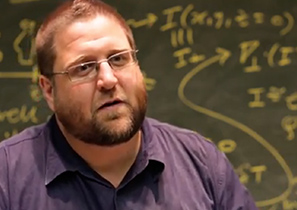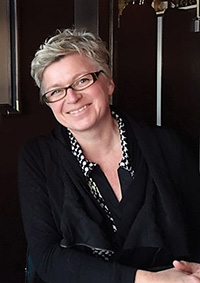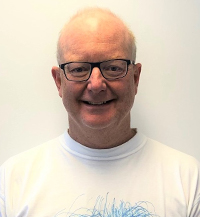Keynote Speakers
Prof. Sara Bals, University of Antwerp

Topic: Electron tomography
Sara Bals completed her PhD at the University of Antwerp after which she undertook postdoctoral research at NCEM (National Center for Electron Microscopy) at Lawrence Berkeley National Laboratory before returning to Antwerp. She is now a Professor at EMAT (Electron microscopy for materials science) in the department of Physics. Her main research interest consists of the application and further development of electron tomography for advanced nano-structured materials including: Atomic resolution electron tomography; Quantitative electron tomography; Study of nanoparticles and ultra small clusters using aberration corrected (S)TEM; Exit wave reconstruction; Interfaces between soft and hard matter. Sara has over 270 publications in international journals and in 2013 she received an ERC Starting Grant entitled "Colouring Atoms in 3 Dimensions".
Dr Anders Kaestner, Paul Scherrer Institute

Topic: Neutron tomography techniques/applications
Anders Kaestner is a beamline scientist at the cold neutron imaging beamline (ICON) at Paul Scherrer Institut, Switzerland, since 2008. He studied computer systems engineering with specialization to mechatronics at Halmstad University, Sweden. The work with imaging and image processing was continued with a Ph.D. in Signal Processing at Chalmers Institute of Technology, Gothenburg, Sweden, in 2002. During his post-doctoral fellowship in the soil physics group at ETH, he started to work with tomography techniques for porous media. He has authored and coauthored more 100 publications related to imaging with applications in materials science, geology, and cultural heritage. Special fields of interest are computed tomography and image enhancement, in particular with applications using neutron imaging in porous media research. He is currently a board member of the international society for neutron radiology.
Prof. David M. Paganin, Monash University (Adjunct Professor, Research)

Topic: X-ray optics
David received his PhD in optics from Melbourne University in 1999, and has been with Monash University since 2002. He is a theoretical physicist with a range of research interests in x-ray optics, visible-light optics, electron diffraction, neutron optics and non-linear quantum fields. He has published in coherent optics, phase retrieval, ghost imaging, Bose-Einstein condensation, tomography, medical imaging, electron microscopy, topological defects, microscopy and quantum turbulence. He always strives for original (and preferably simple) solutions to highly interesting problems of either fundamental or practical significance (preferably both!). He enjoys working closely with others, especially experimentalists, with a view to seeing the theory "made real" via tangible applications to the physical world.
Prof. Stuart Stock, Northwestern University

Topic: tomography in biology
Stuart received his MSc in materials science and engineering at Northwestern University and his PhD in metallurgical engineering at University of Illinois. He was on the materials science faculty at Georgia Tech for 16 years where he became a professor. He then returned to Northwestern Uni as a research professor in the medical school. He has used X-ray diffraction for material characterisation for nearly 40 years and revised Cullity's classic text: Elements of X-ray diffraction. He has employed X-ray imaging for the same length of time, travelling to the Advanced Photon Source for synchrotron radiation 6 or more times per year for the past 35 years. He has published results of microCT studies of inorganic materials and composites and of mineralised tissues in mammals and echinoderms for the 30 years. He has over 240 publications, was the conference chair of the SPIE conference "Developments in X-ray tomography" from 2005 until 2015, and has written the book: "MicroComputed Tomography: Methodology and Applications"
Prof. Dorthe Wildenschild, Oregon State University

Topic: Application to transport properties in porous media
Dorthe received her Ph.D. and M.S. in Civil and Environmental Engineering from Danish Technical University. She is a professor of environmental engineering at Oregon State University, with research focused on flow and transport in porous media, addressing research questions about subsurface water pollution and energy-related storage. Recent work includes the optimization of geologic storage of anthropogenic CO2 in subsurface reservoirs; exploration of colloid-facilitated transport of contaminants in groundwater; microbial enhanced oil recovery; and investigations in support of more effective groundwater remediation techniques. She is currently the PI for an NSF-funded instrument development that has brought a state-of-the-art 3D imaging facility to the Pacific Northwest, USA.
Prof. Mark Knackstedt, Australian National University

Topic: Digital Materials Design
Mark Knackstedt (BSc, Columbia; PhD, Rice) is a Professor at the Department of Applied Mathematics at the Australian National University. He is the current Kimberley Clark Interpore Lecturer and has been an SPE Distinguished Lecturer (2015-16) and past (2007-2008, 2009-2010, 2012-2013) SPWLA distinguished speaker. He was awarded the George C. Matson Memorial Award from the AAPG in 2009 and the ENI award for New Frontiers in Hydrocarbon Research in 2010 and was part of a team awarded the 2012 Eureka Prize for Commercialization of Innovation.
Prof. Ti-Qiao (T.Q) Xiao, Shanghai Synchrotron Radiation Facility

Topic: multi-modal tomography at SSRF
T.Q received his Ph.D in Optics at the Chinese Academy of Sciences. He is now the deputy director of Shanghai Synchrotron Radiation Facility(SSRF). He is the standing member of Shanghai Nuclear Society and the China Synchrotron Radiation Society. He is also the committee member of China Society for Measurement (ionizing radiation). His research fields include X-ray Optics, Imaging Optics and related applications. He is the project leader of several multi-million CNY grants including the state key research and development program "Nano Science and Technology". He has been awarded the "Shanghai Science and Technology Progress Award", "outstanding science and technology achievement prize of the Chinese Academy of Sciences", "Shanghai Science and Technology Progress Award", and the "National Science and Technology Progress Award". He has authored over 200 research papers. He has supervised more than 30 graduate students.
|

